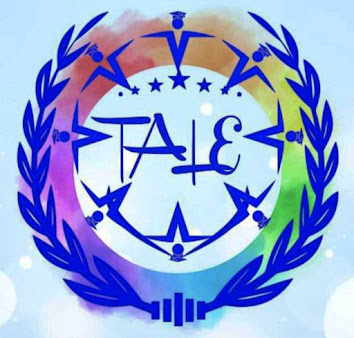What are the importances of
Teaching Aids in History?
Introduction:
Teaching
aids play a crucial role in enhancing the learning experience in history
classrooms. These tools serve to engage students, deepen their understanding,
and make historical concepts come alive. From visual aids to technological
advancements, teaching aids offer diverse avenues for educators to impart
historical knowledge effectively.
Importance of Teaching Aids in History:
1.
Enhanced Understanding: Teaching aids provide visual representations of
historical events, figures, and concepts, helping students grasp complex topics
more easily.
2.
Increased Engagement: Visual aids such as maps, timelines, and photographs
capture students' attention and stimulate their interest in history, making the
learning process more engaging.
3.
Multisensory Learning: Teaching aids appeal to different learning styles,
catering to auditory, visual, and kinesthetic learners simultaneously, thereby
improving retention and comprehension.
4.
Contextualization: Historical artifacts, replicas, and primary sources serve to
contextualize historical events, allowing students to connect abstract concepts
with tangible objects from the past.
5.
Critical Thinking Development: Interactive teaching aids, such as role-playing
activities and simulations, encourage students to think critically, analyze
evidence, and formulate their interpretations of historical events.
6.
Cultural Appreciation: Teaching aids enable students to explore diverse
cultures, traditions, and perspectives from different historical periods,
fostering cultural appreciation and empathy.
7.
Technology Integration: Incorporating technological tools like multimedia
presentations, virtual reality, and interactive websites provides students with
immersive experiences, making history more accessible and relevant to their
digital age.
8.
Facilitates Discussion: Visual aids and multimedia resources serve as
conversation starters, promoting meaningful class discussions and collaborative
learning among students.
9.
Long-term Retention: The use of teaching aids creates memorable learning
experiences, leading to better long-term retention of historical knowledge and
concepts.
10.
Real-world Connections: Teaching aids help students recognize the relevance of
history in the present-day world, encouraging them to draw parallels between
past events and contemporary issues.
Conclusion:
Teaching
aids are invaluable tools for history educators, offering diverse strategies to
engage students, enhance understanding, and foster a deeper appreciation for
the complexities of the past. By leveraging various visual, auditory, and
interactive resources, educators can create dynamic learning environments that
inspire curiosity, critical thinking, and a lifelong passion for history.
ইতিহাসে শিক্ষামূলক
প্রদীপনের গুরুত্বগুলি কি কি?
ভূমিকা:
ইতিহাসের শ্রেণীকক্ষে
শেখার অভিজ্ঞতা বাড়ানোর ক্ষেত্রে শিক্ষাদান সহায়ক গুরুত্বপূর্ণ ভূমিকা পালন করে।
এই সরঞ্জামগুলি শিক্ষার্থীদের জড়িত করতে, তাদের বোঝাপড়াকে
গভীর করতে এবং ঐতিহাসিক ধারণাগুলিকে জীবন্ত করে তুলতে সাহায্য করে। ভিজ্যুয়াল
এইডস থেকে শুরু করে প্রযুক্তিগত অগ্রগতি পর্যন্ত, শিক্ষণ সহায়তাগুলি
শিক্ষাবিদদের ঐতিহাসিক জ্ঞান কার্যকরভাবে প্রদানের জন্য বিভিন্ন উপায় প্রদান করে।
ইতিহাসে শিক্ষণ সহায়কের গুরুত্ব:
1. উন্নত বোঝাপড়া:
শিক্ষণ সহায়কগুলি ঐতিহাসিক ঘটনা, পরিসংখ্যান এবং ধারণাগুলির চাক্ষুষ
উপস্থাপনা প্রদান করে, যা শিক্ষার্থীদের জটিল বিষয়গুলিকে আরও
সহজে উপলব্ধি করতে সাহায্য করে।
2. বর্ধিত ব্যস্ততা:
মানচিত্র,
টাইমলাইন
এবং ফটোগ্রাফের মতো ভিজ্যুয়াল এইডগুলি শিক্ষার্থীদের মনোযোগ আকর্ষণ করে এবং
ইতিহাসের প্রতি তাদের আগ্রহকে উদ্দীপিত করে, যা শেখার
প্রক্রিয়াটিকে আরও আকর্ষক করে তোলে।
3. মাল্টিসেন্সরি
লার্নিং: শিক্ষণীয় উপকরণগুলি বিভিন্ন শেখার শৈলীতে আবেদন করে, একই
সাথে শ্রবণ,
ভিজ্যুয়াল, এবং
কাইনেস্টেটিক শিক্ষার্থীদেরকে ক্যাটারিং করে, যার ফলে ধারণ এবং
বোঝার উন্নতি হয়।
4. প্রাসঙ্গিককরণ:
ঐতিহাসিক নিদর্শন,
প্রতিলিপি
এবং প্রাথমিক উত্সগুলি ঐতিহাসিক ঘটনাকে প্রাসঙ্গিককরণের জন্য পরিবেশন করে, যা
শিক্ষার্থীদের অতীতের বাস্তব বস্তুর সাথে বিমূর্ত ধারণাগুলিকে সংযুক্ত করতে দেয়।
5. সমালোচনামূলক চিন্তার
বিকাশ: ইন্টারেক্টিভ শিক্ষণ সহায়ক, যেমন ভূমিকা-পালন কার্যক্রম এবং
সিমুলেশন,
ছাত্রদের
সমালোচনামূলকভাবে চিন্তা করতে, প্রমাণ বিশ্লেষণ করতে এবং ঐতিহাসিক
ঘটনাগুলির তাদের ব্যাখ্যা তৈরি করতে উত্সাহিত করে।
6. সাংস্কৃতিক উপলব্ধি:
শিক্ষাদান সহায়ক শিক্ষার্থীদের বিভিন্ন ঐতিহাসিক সময়কাল থেকে বিভিন্ন সংস্কৃতি, ঐতিহ্য
এবং দৃষ্টিভঙ্গি অন্বেষণ করতে সক্ষম করে, সাংস্কৃতিক উপলব্ধি
এবং সহানুভূতি বৃদ্ধি করে।
7. প্রযুক্তি
ইন্টিগ্রেশন: মাল্টিমিডিয়া প্রেজেন্টেশন, ভার্চুয়াল রিয়েলিটি
এবং ইন্টারেক্টিভ ওয়েবসাইটগুলির মতো প্রযুক্তিগত সরঞ্জামগুলি অন্তর্ভুক্ত করা
ছাত্রদের নিমগ্ন অভিজ্ঞতা প্রদান করে, ইতিহাসকে তাদের ডিজিটাল যুগের সাথে আরও
অ্যাক্সেসযোগ্য এবং প্রাসঙ্গিক করে তোলে।
8. আলোচনার সুবিধা দেয়:
ভিজ্যুয়াল এইডস এবং মাল্টিমিডিয়া রিসোর্স কথোপকথন শুরু করে, শিক্ষার্থীদের
মধ্যে অর্থপূর্ণ ক্লাস আলোচনা এবং সহযোগিতামূলক শিক্ষার প্রচার করে।
9. দীর্ঘমেয়াদী ধারণ:
শিক্ষণ সহায়কের ব্যবহার স্মরণীয় শেখার অভিজ্ঞতা তৈরি করে, যা
ঐতিহাসিক জ্ঞান এবং ধারণাগুলির দীর্ঘমেয়াদী ধরে রাখার দিকে পরিচালিত করে।
10. বাস্তব-বিশ্ব সংযোগ:
শিক্ষাদানের সাহায্য ছাত্রদের বর্তমান বিশ্বের ইতিহাসের প্রাসঙ্গিকতা চিনতে
সাহায্য করে,
তাদেরকে
অতীতের ঘটনা এবং সমসাময়িক বিষয়গুলির মধ্যে সমান্তরাল আঁকতে উত্সাহিত করে৷
উপসংহার:
শিক্ষাদানের
সহায়কগুলি হল ইতিহাসের শিক্ষাবিদদের জন্য অমূল্য হাতিয়ার, যা
ছাত্রদের জড়িত করার জন্য, বোঝাপড়ার উন্নতি করতে এবং অতীতের
জটিলতার জন্য গভীর উপলব্ধি গড়ে তোলার জন্য বিভিন্ন কৌশল অফার করে। বিভিন্ন
ভিজ্যুয়াল,
শ্রুতিমধুর
এবং ইন্টারেক্টিভ রিসোর্স ব্যবহার করে, শিক্ষাবিদরা গতিশীল
শিক্ষার পরিবেশ তৈরি করতে পারেন যা কৌতূহল, সমালোচনামূলক
চিন্তাভাবনা এবং ইতিহাসের জন্য আজীবন আবেগকে অনুপ্রাণিত করে।
Briefly discuss 'Micro teaching
cycle'.
Introduction:
The microteaching cycle is a
systematic approach used in teacher training programs to enhance teaching
skills through structured practice, feedback, and reflection. It involves
breaking down teaching into manageable components, allowing teachers to refine
their instructional techniques in a supportive environment.
Microteaching Cycle in Points:
1. Planning:
- Teachers plan a short lesson focusing on specific learning objectives
and instructional strategies.
- Lesson plans are tailored to the needs of the learners and aligned
with curriculum standards.
2. Teaching:
- Teachers deliver the planned lesson to a small group of students or
peers.
- The teaching session is conducted within a controlled environment,
allowing for focused practice.
3. Feedback:
- Observers provide constructive feedback to the teacher based on
predetermined criteria.
- Feedback focuses on various aspects such as clarity of instruction,
classroom management, and student engagement.
4. Reflection:
- Teachers reflect on the feedback received and evaluate their teaching
performance.
- They identify strengths and areas for improvement, setting goals for
future practice.
Conclusion:
The microteaching cycle offers a
structured framework for teacher development, enabling educators to refine
their teaching skills through deliberate practice and reflection. By
iteratively planning, teaching, receiving feedback, and reflecting on their
practice, teachers can continuously improve their instructional effectiveness
and enhance student learning outcomes.
'অনুশিক্ষণ চক্র' সংক্ষেপে
বর্ণনা করুন।
ভূমিকা:
অনুশিক্ষণ চক্র হল একটি
পদ্ধতিগত পদ্ধতি যা শিক্ষক প্রশিক্ষণ কর্মসূচিতে স্ট্রাকচার্ড অনুশীলন, প্রতিক্রিয়া
এবং প্রতিফলনের মাধ্যমে শিক্ষার দক্ষতা বাড়ানোর জন্য ব্যবহৃত হয়। এতে
শিক্ষাদানকে পরিচালনাযোগ্য উপাদানে বিভক্ত করা জড়িত, শিক্ষকদের
একটি সহায়ক পরিবেশে তাদের নির্দেশমূলক কৌশলগুলিকে পরিমার্জিত করার অনুমতি দেয়।
অনুশিক্ষণ চক্র:
1. পরিকল্পনা:
- শিক্ষকরা নির্দিষ্ট শেখার উদ্দেশ্য এবং
নির্দেশমূলক কৌশলগুলির উপর ফোকাস করে একটি ছোট পাঠের পরিকল্পনা করেন।
- পাঠের পরিকল্পনাগুলি শিক্ষার্থীদের
প্রয়োজনের জন্য তৈরি করা হয়েছে এবং পাঠ্যক্রমের মানগুলির সাথে সারিবদ্ধ।
2. শিক্ষাদান:
- শিক্ষকরা পরিকল্পিত পাঠটি ছাত্রদের বা
সমবয়সীদের একটি ছোট গ্রুপের কাছে পৌঁছে দেন।
- শিক্ষণ অধিবেশন একটি নিয়ন্ত্রিত
পরিবেশের মধ্যে পরিচালিত হয়, যাতে মনোযোগ কেন্দ্রীভূত অনুশীলন করা
যায়।
3. প্রতিক্রিয়া:
- পর্যবেক্ষকরা পূর্বনির্ধারিত মানদণ্ডের
ভিত্তিতে শিক্ষককে গঠনমূলক প্রতিক্রিয়া প্রদান করে।
- প্রতিক্রিয়া বিভিন্ন দিকের উপর ফোকাস
করে যেমন নির্দেশের স্বচ্ছতা, শ্রেণীকক্ষ ব্যবস্থাপনা, এবং
ছাত্রদের ব্যস্ততা।
4. প্রতিফলন:
- শিক্ষকরা প্রাপ্ত প্রতিক্রিয়ার উপর
প্রতিফলন করে এবং তাদের শিক্ষাদানের কার্যকারিতা মূল্যায়ন করে।
- তারা উন্নতির জন্য শক্তি এবং
ক্ষেত্রগুলি চিহ্নিত করে, ভবিষ্যতের অনুশীলনের জন্য লক্ষ্য
নির্ধারণ করে।
উপসংহার:
অনুশিক্ষণ চক্র
শিক্ষক বিকাশের জন্য একটি কাঠামোগত কাঠামো সরবরাহ করে, যা
শিক্ষাবিদদের ইচ্ছাকৃত অনুশীলন এবং প্রতিফলনের মাধ্যমে তাদের শিক্ষাদানের দক্ষতা
পরিমার্জিত করতে সক্ষম করে। পুনরাবৃত্তিমূলকভাবে পরিকল্পনা, শিক্ষাদান, প্রতিক্রিয়া
গ্রহণ এবং তাদের অনুশীলনের উপর প্রতিফলিত করার মাধ্যমে, শিক্ষকরা
ক্রমাগত তাদের নির্দেশমূলক কার্যকারিতা উন্নত করতে পারেন এবং শিক্ষার্থীদের শেখার
ফলাফলগুলিকে উন্নত করতে পারেন।
What are the different
teaching-learning strategies in teaching History at the secondary level?
Introduction:
-
Introduce the significance of teaching History at the secondary level,
emphasizing its role in fostering critical thinking, cultural awareness, and
understanding of the past.
-
Highlight the importance of employing diverse teaching-learning strategies to
cater to the varied needs and learning styles of students in the classroom.
Teaching-Learning
Strategies in History at the Secondary Level:
1. Lecture-based
instruction:
- Provides foundational knowledge and
context about historical events and themes.
- Allows for direct transmission of
information from teacher to students.
2. Discussion-based
learning:
- Encourages active engagement and
participation among students.
- Fosters critical thinking skills through
analysis and interpretation of historical content.
3. Inquiry-based
learning:
- Promotes independent research,
investigation, and problem-solving skills.
- Empowers students to ask questions, explore
primary sources, and draw their conclusions about historical topics.
4. Project-based
learning:
- Engages students in hands-on,
collaborative projects to deepen understanding.
- Encourages creativity and application of
historical knowledge in real-world contexts.
5. Role-playing
and simulations:
- Provides immersive experiences that allow
students to empathize with historical figures and events.
- Enhances understanding by simulating
historical contexts and decision-making processes.
6. Multimedia
resources:
- Utilizes digital tools, documentaries, and
archival materials to enrich learning experiences.
- Appeals to visual and auditory learners,
enhancing comprehension and retention of historical content.
7. Field
trips and experiential learning:
- Provides opportunities for firsthand
exploration of historical sites, museums, and cultural landmarks.
- Deepens appreciation for history by
connecting classroom learning to real-world experiences.
8. Collaborative
learning:
- Encourages teamwork, communication, and
peer-to-peer learning.
- Fosters a sense of community and shared
responsibility for historical inquiry and understanding.
Conclusion:
-
Recap the importance of employing diverse teaching-learning strategies to
effectively teach History at the secondary level.
-
Emphasize the role of these strategies in promoting active engagement, critical
thinking, and meaningful learning experiences for students.
-
Highlight the value of adapting teaching methods to meet the needs of diverse
learners and cultivate a deeper appreciation for the study of history.
মাধ্যমিক স্তরে
ইতিহাস শিক্ষণে ব্যবহৃত বিভিন্ন শিক্ষণ-শিখন পদ্ধতি ও কৌশলগুলি কি কি?
ভূমিকা:
- মাধ্যমিক স্তরে
ইতিহাস শেখানোর তাৎপর্যের পরিচয় দিন, সমালোচনামূলক চিন্তাভাবনা, সাংস্কৃতিক
সচেতনতা এবং অতীতকে বোঝার ক্ষেত্রে এর ভূমিকার উপর জোর দিন।
- শ্রেণিকক্ষে
শিক্ষার্থীদের বিভিন্ন চাহিদা এবং শেখার শৈলী মেটাতে বিভিন্ন শিক্ষণ-শেখানো কৌশল
প্রয়োগের গুরুত্ব তুলে ধরুন।
মাধ্যমিক স্তরে
ইতিহাসে শিক্ষণ-শিক্ষার কৌশল:
1. বক্তৃতা ভিত্তিক
নির্দেশনা:
- ঐতিহাসিক ঘটনা এবং থিম সম্পর্কে মৌলিক
জ্ঞান এবং প্রসঙ্গ প্রদান করে।
- শিক্ষক থেকে শিক্ষার্থীদের কাছে সরাসরি
তথ্য প্রেরণের অনুমতি দেয়।
2. আলোচনা ভিত্তিক
শিক্ষা:
- ছাত্রদের মধ্যে সক্রিয় ব্যস্ততা এবং
অংশগ্রহণকে উৎসাহিত করে।
- ঐতিহাসিক বিষয়বস্তু বিশ্লেষণ এবং
ব্যাখ্যার মাধ্যমে সমালোচনামূলক চিন্তার দক্ষতা বৃদ্ধি করে।
3. তদন্ত-ভিত্তিক
শিক্ষা:
- স্বাধীন গবেষণা, তদন্ত, এবং
সমস্যা সমাধানের দক্ষতা প্রচার করে।
- ছাত্রদের প্রশ্ন জিজ্ঞাসা করতে, প্রাথমিক
উত্সগুলি অন্বেষণ করতে এবং ঐতিহাসিক বিষয়গুলি সম্পর্কে তাদের সিদ্ধান্তে আঁকতে
ক্ষমতা দেয়৷
4. প্রকল্প ভিত্তিক
শিক্ষা:
- বোধগম্যতা আরও গভীর করতে শিক্ষার্থীদের
হাতে-কলমে,
সহযোগিতামূলক
প্রকল্পে নিযুক্ত করে।
- বাস্তব-বিশ্বের প্রেক্ষাপটে সৃজনশীলতা
এবং ঐতিহাসিক জ্ঞানের প্রয়োগকে উৎসাহিত করে।
5. রোল প্লেয়িং এবং
সিমুলেশন:
- নিমগ্ন অভিজ্ঞতা প্রদান করে যা
শিক্ষার্থীদের ঐতিহাসিক ব্যক্তিত্ব এবং ঘটনাগুলির প্রতি সহানুভূতিশীল হতে দেয়।
- ঐতিহাসিক প্রেক্ষাপট এবং সিদ্ধান্ত
গ্রহণের প্রক্রিয়া অনুকরণ করে বোঝার উন্নতি করে।
6. মাল্টিমিডিয়া সম্পদ:
- শেখার অভিজ্ঞতা সমৃদ্ধ করতে ডিজিটাল টুল, ডকুমেন্টারি
এবং আর্কাইভাল উপকরণ ব্যবহার করে।
- ভিজ্যুয়াল এবং শ্রুতি শিক্ষার্থীদের
কাছে আবেদন,
ঐতিহাসিক
বিষয়বস্তু বোধগম্যতা এবং ধরে রাখা।
7. ক্ষেত্র ভ্রমণ এবং
অভিজ্ঞতামূলক শিক্ষা:
- ঐতিহাসিক স্থান, জাদুঘর, এবং
সাংস্কৃতিক ল্যান্ডমার্কের সরাসরি অন্বেষণের সুযোগ প্রদান করে।
- শ্রেণীকক্ষে শিক্ষাকে বাস্তব-বিশ্বের
অভিজ্ঞতার সাথে সংযুক্ত করে ইতিহাসের প্রতি উপলব্ধি গভীর করে।
8. সহযোগী শিক্ষা:
- টিমওয়ার্ক, যোগাযোগ, এবং
পিয়ার-টু-পিয়ার লার্নিংকে উৎসাহিত করে।
- সম্প্রদায়ের বোধকে উত্সাহিত করে এবং
ঐতিহাসিক অনুসন্ধান এবং বোঝার জন্য ভাগ করা দায়িত্ব।
উপসংহার:
- মাধ্যমিক স্তরে
ইতিহাসকে কার্যকরভাবে শেখানোর জন্য বিভিন্ন শিক্ষণ-শেখানো কৌশলগুলি নিয়োগের
গুরুত্ব পুনর্বিবেচনা করুন।
- সক্রিয় ব্যস্ততা, সমালোচনামূলক
চিন্তাভাবনা,
এবং
শিক্ষার্থীদের জন্য অর্থপূর্ণ শেখার অভিজ্ঞতা প্রচারে এই কৌশলগুলির ভূমিকার উপর
জোর দিন।
- বিভিন্ন শিক্ষার্থীর
চাহিদা মেটাতে এবং ইতিহাস অধ্যয়নের জন্য গভীর উপলব্ধি গড়ে তোলার জন্য শিক্ষার
পদ্ধতিগুলিকে অভিযোজিত করার মূল্য হাইলাইট করুন।
2.
3.
4.











No comments:
Post a Comment